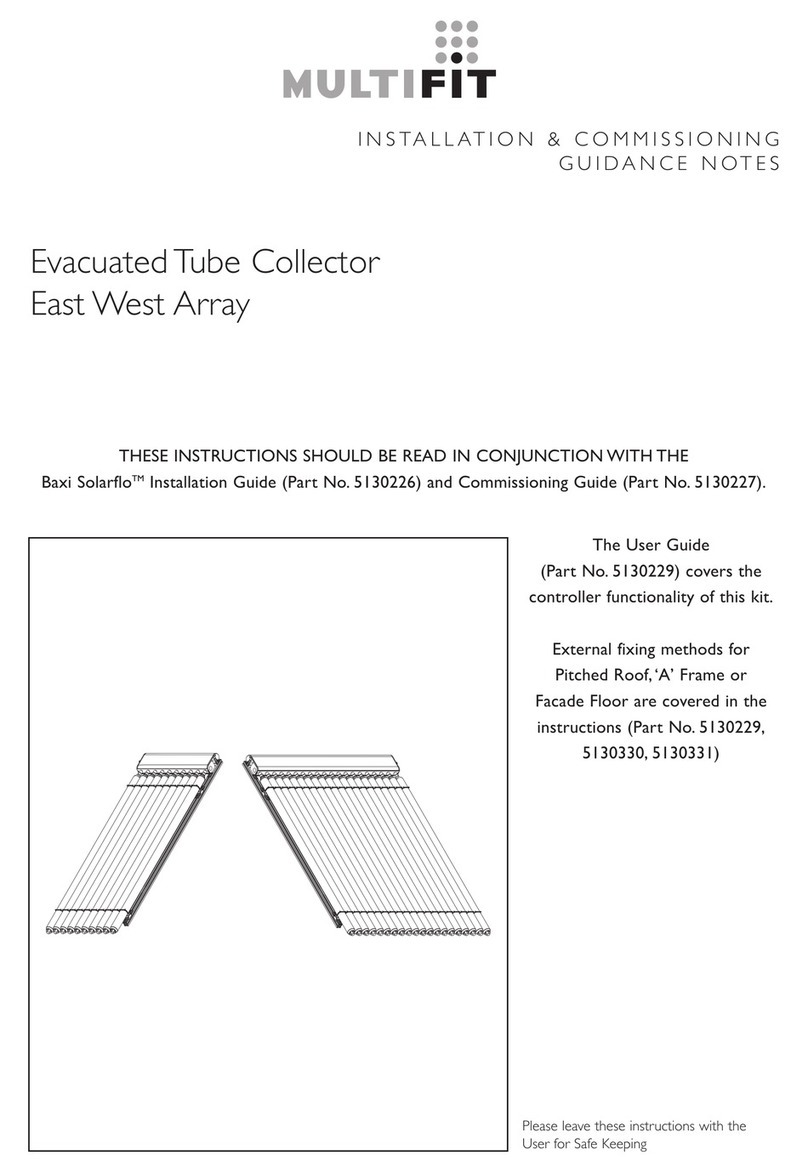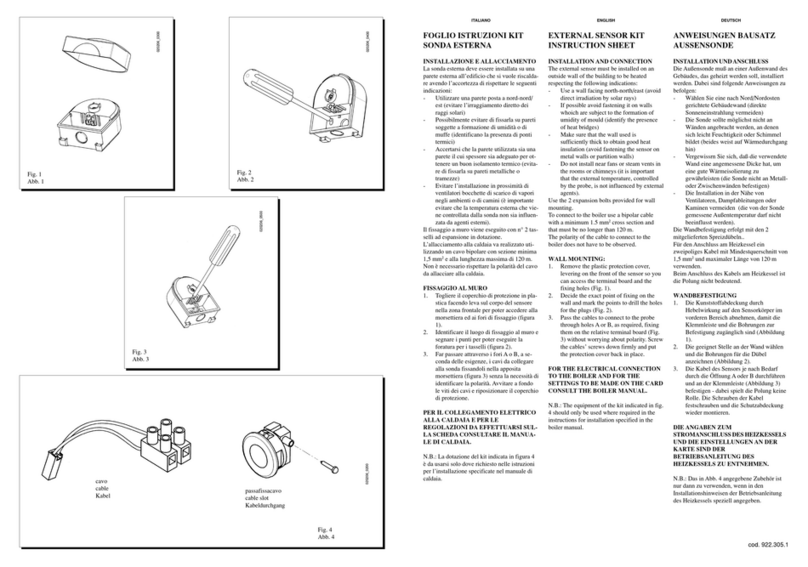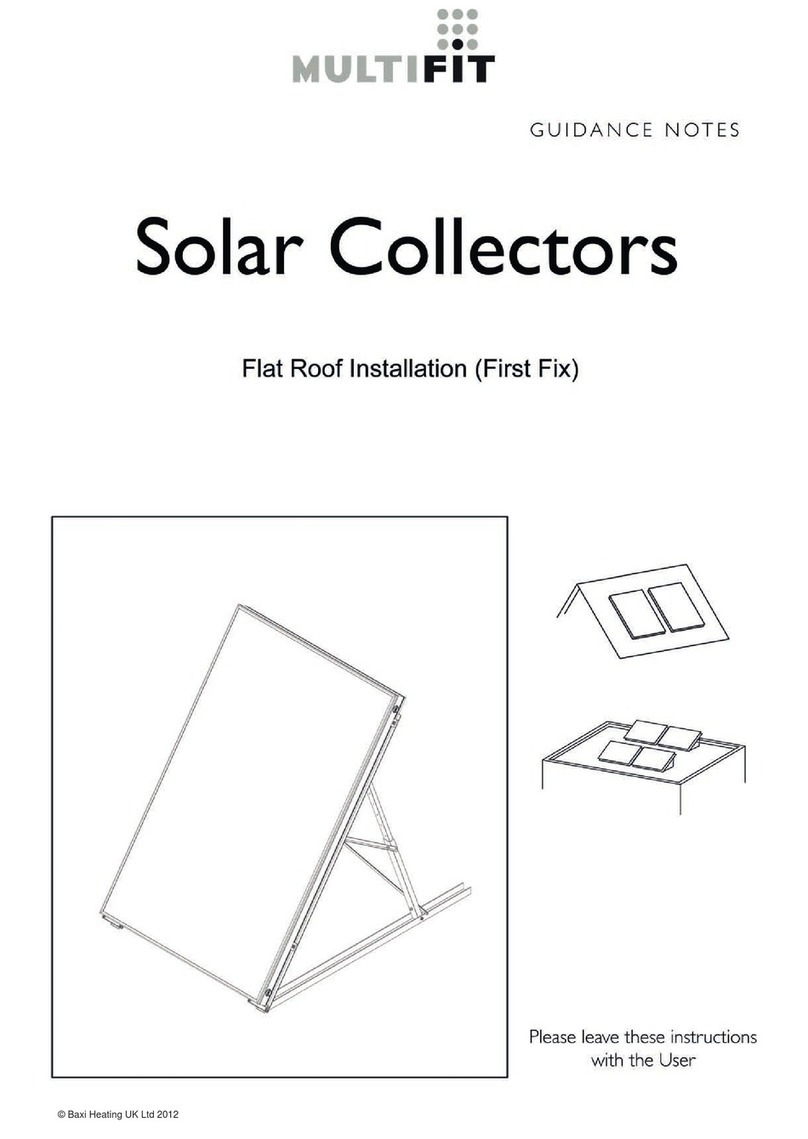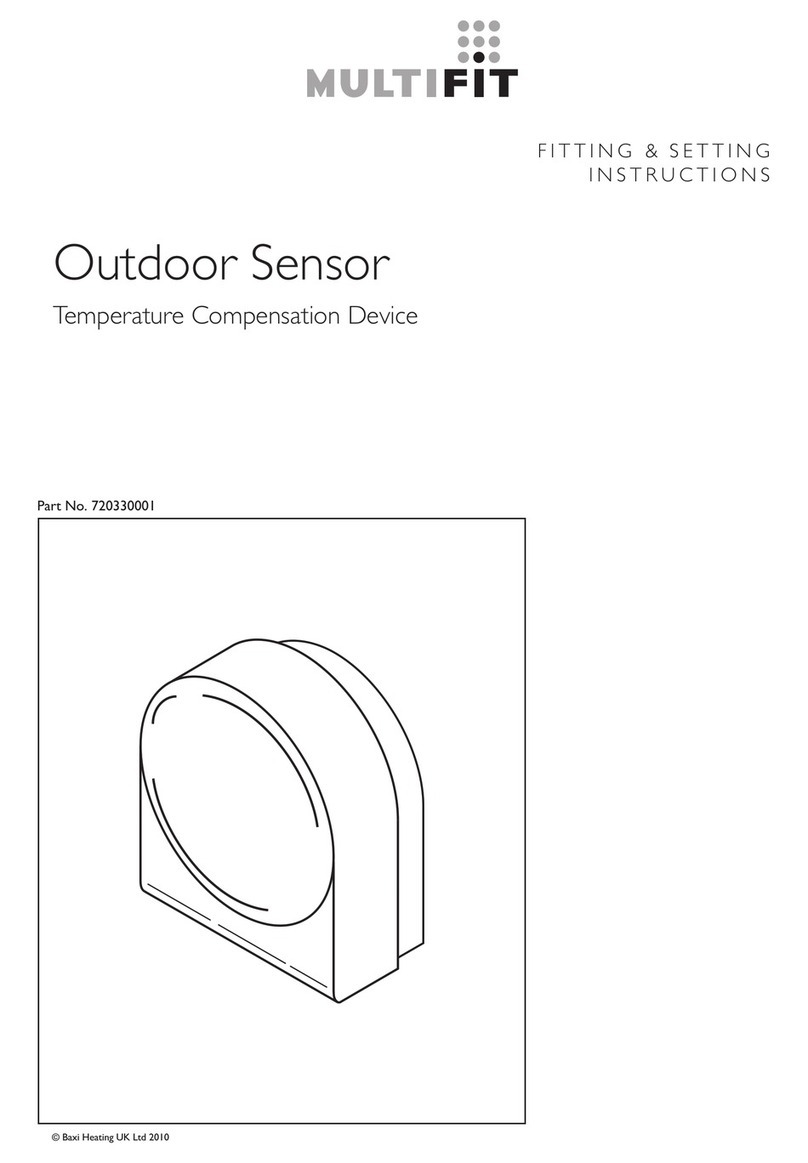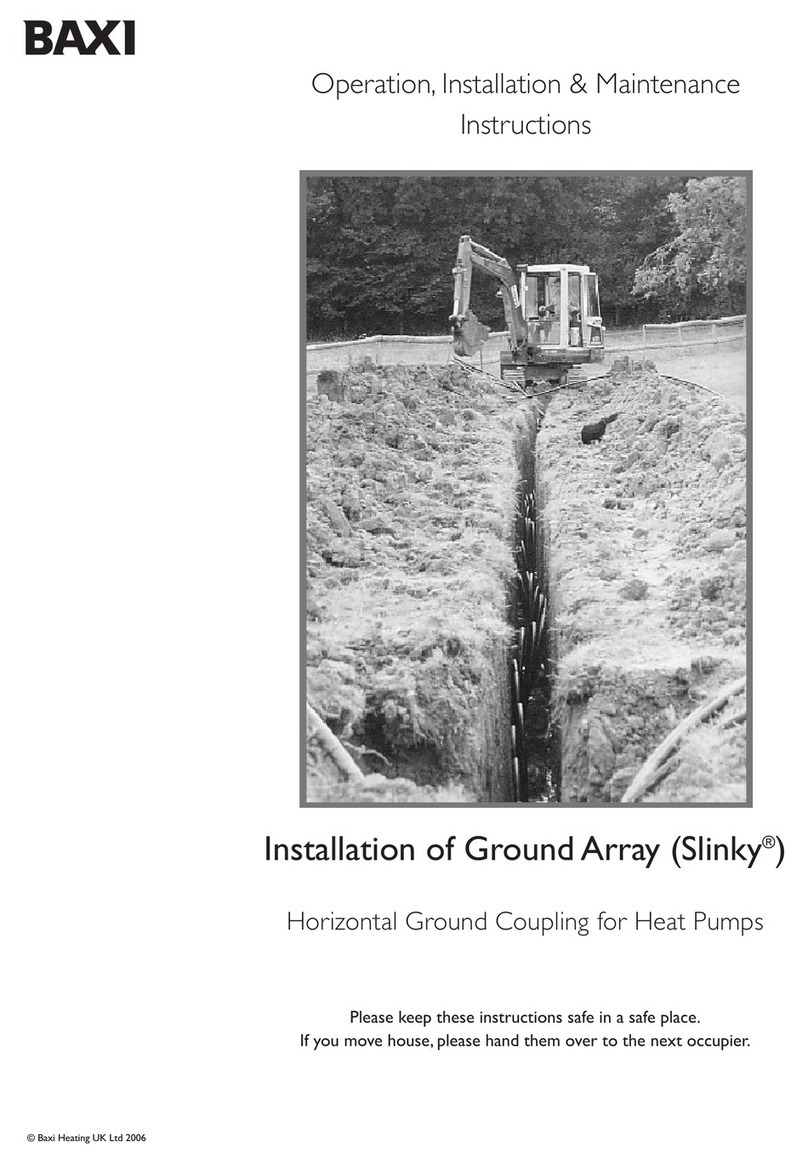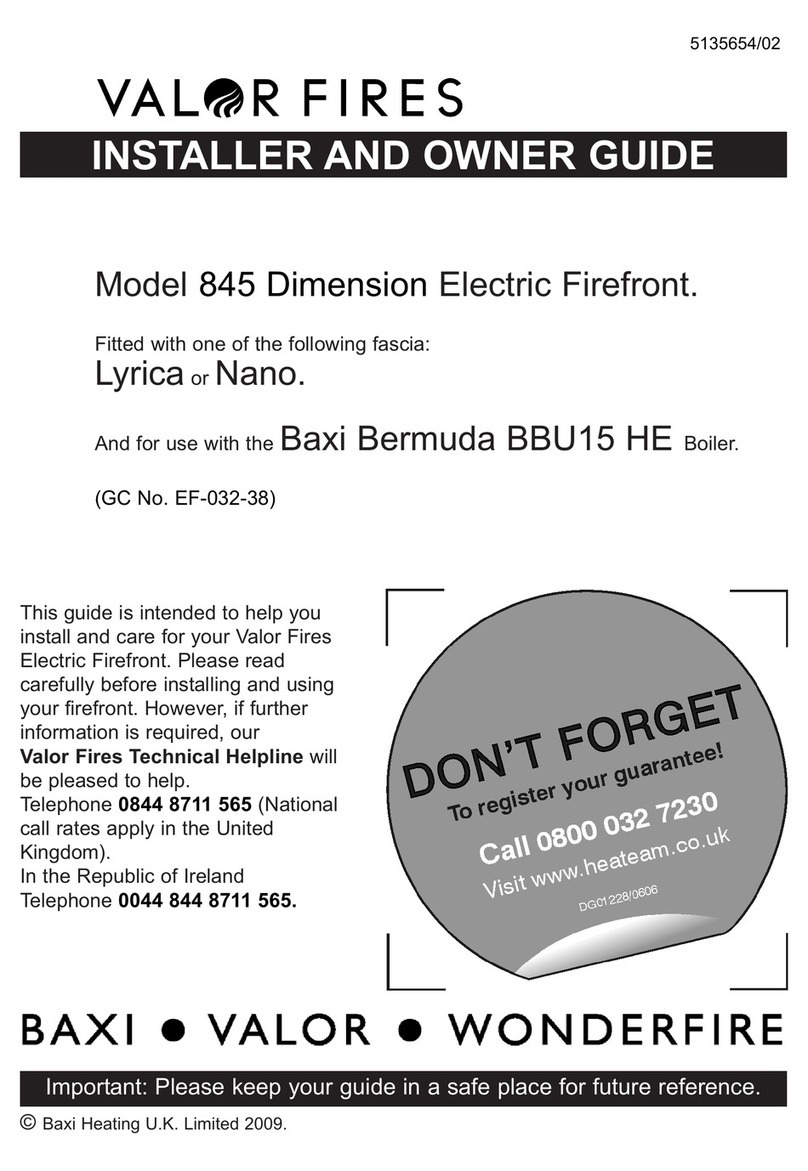page 2
© Baxi Heating UK Ltd 2011
• Flue systems must be constructed using only components
approved for use with the appliance and installed in
accordance with BS 5440 Part 1, any manufacturers
instructions and Part J of the Building Regulations.
• In order to meet the requirements of the Gas Safety (Installation
& Use) Regulations, provision should be made such that all flue
joints and supports can be inspected.
• The flue system should have a continuous fall back to the boiler
(1.5° to 3°) and be supported at least once every metre using
suitable support brackets (where shorter straight lengths are used,
for example between two bends, these should also be
supported).
• Ensure that the there are no ‘dips’ in the flue system.
• Consideration must be given to protect exposed parts of the
outlet duct where accidental touch may occur.
• All fittings should be correctly engaged and secured where
necessary. Expansion Gap details must be observed on twin
pipe 80/80 systems (Flue Group N).
• Flue extensions can be cut to length if necessary. The cut end
should be square and de-burred to prevent damage to seals when
assembling to a fitting.
• The MAXIMUM total equivalent length is given in the boiler
Installation & Servicing Instructions.
• If the flue system is to be fitted prior to the boiler, temporary
precautions must be taken to prevent rain entry into the room of
installation. Any precautionary measures must be removed prior
to fitting the boiler.
• It is the responsibility of the installer to ensure the integrity of
the flue & chimney system before commissioning the boiler.
FLUE TERMINATIONS
It is important to protect building structures from the condensate
plume produced from the boiler exhaust duct flue terminal. This
should always be directed away, by using plume deflector or PDK
if necessary. Where PDK’s terminate under balconies it is
recommended to extend the terminal beyond the balcony.
TERMINAL GUARDS
• It is necessary to use a Terminal Guard where there exists the
risk of blockage and/or damage to the terminal or air intake of the
PDK, and also in instances where there is a risk of injury to people,
including the possibility of exposure to high temperatures.
• Any terminal that is less than 2 metres above finished floor or
ground level must be guarded. This also applies when terminals
are positioned above flat roofs and balconies to which there is
regular unimpeded access.
• A guard must not prevent correct & safe operation of the
appliance the terminal is connected to.
IMPORTANT NOTES
Please read before continuing with the flue installation !
CHIMNEYS & FLUES IN VOIDS
“Voids” includes ceiling & floor voids, purpose-built enclosures,
service risers, certain types of roof space and any other enclosure
that restricts access to the chimney.
The need to inspect applies to concentric and twin systems, and
both the air and flue ducts of the latter.
The requirement to inspect does not apply where a boiler is
mounted on the wall and the chimney system runs within the
building structure (e.g. direct from the rear of the boiler through
the wall to outside).
A proprietary liner containing a chimney system is also exempt,
providing there are no joints in this part of the system.
B.S. 5440-1, Gas Safety (Installation & Use) Regulations and any
Gas Safe Register Technical Bulletins must be consulted.
Chimney systems must not pass through other properties
because access may not always be available for inspection.
Access must be provided at strategic locations to allow
inspection to confirm:-
i) the system is continuous
ii) all joints are correctly assembled & sealed
iii) adequate support has been provided
iv) any “fall” or drain point required for condensation
has been provided
Inspection hatches must be permanent, be of sufficient size and
number, located such that no special equipment (e.g. an
endoscope) is required to perform inspection and have suitable
fire resistance.
Inspection hatches must comply with the following:-
i) all voids containing a concealed chimney system must
have at least one hatch
ii) hatches must be at least 300mm x 300mm
iii) no joint in the flue must further than 1.5m from the
edge of the nearest hatch
iv) hatches should, where possible, be located at
changes of direction in the flue
v) where iv) is not possible bends should fully visible
from both directions
As far as practicable hatches should be installed in non-habitable
areas such as cupboards and passageways.
A Gas Safe Registered engineer should always be consulted when
considering the positioning of inspection hatches.
The presence of other services and pipework may influence the
location of inspection hatches. In exceptional circumstances these
other services may have to be re-routed to allow suitable
positioning of a hatch.
Installation of any hatch shall not compromise the integrity and
safety of the property. If necessary consult Local Building
Regulations or Building Control Office for guidance. In all
instances the hatch manufacturers instructions should be
consulted and adhered to.
FIRESTOPS
Use of firestops may be required where the flue or chimney
passes between rooms or spaces. Any firestop or collar MUST
NOT prevent the linear expansion or contraction of the flue or
chimney
MAKING GOOD
Where the flue system passes through an external wall the joint
should ‘made good’ by use of suitable sealant or building
materials and the flue trims supplied if required.
Terminal Guard
Part No. 720627901

